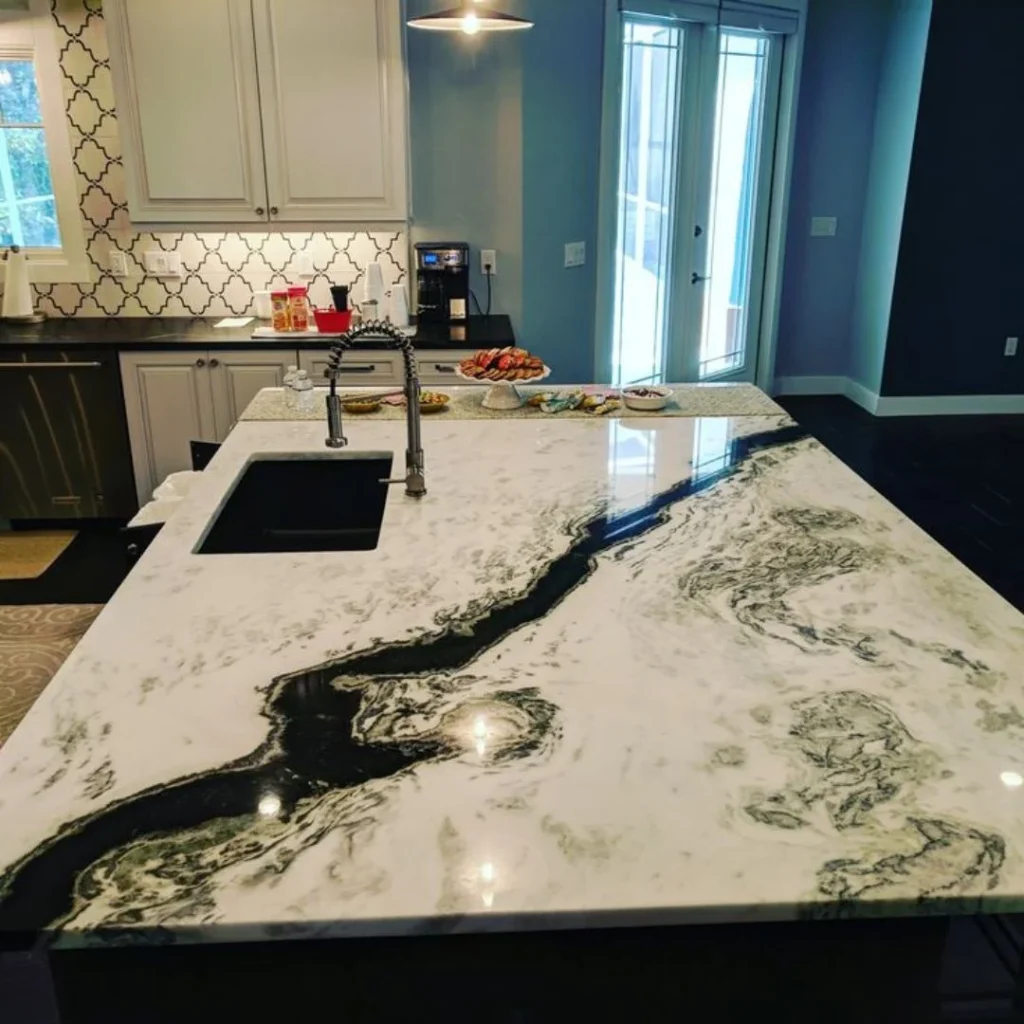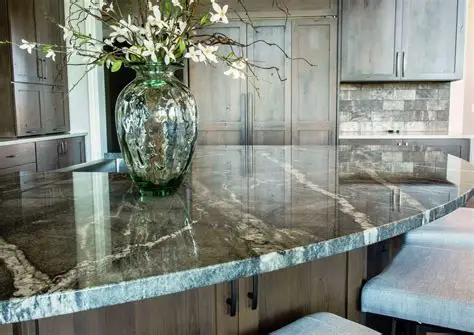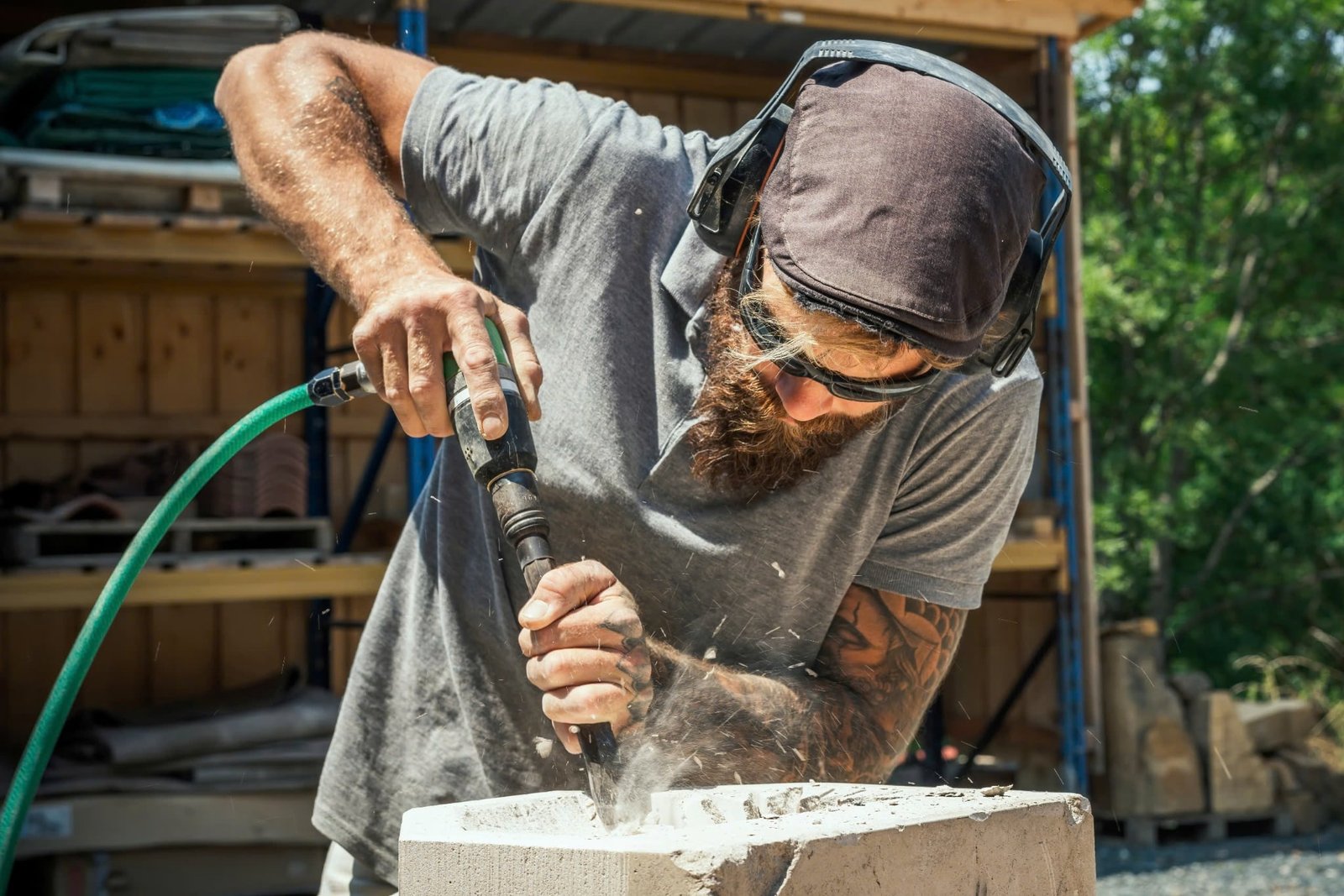
Granite countertops are a luxurious and durable feature in many homes, known for their timeless elegance and high-end appeal.
Granite countertops are a luxurious and durable feature in many homes, known for their timeless elegance and high-end appeal. However, if not cleaned and maintained properly, these beautiful surfaces can develop hard water stains, limescale deposits, calcium buildup, and dark spots—especially in high-use areas like granite kitchen countertops and granite bathroom countertops.
In this comprehensive guide, you’ll learn how to safely and effectively remove these stubborn blemishes without damaging your granite. Whether you’re dealing with polished granite countertops, honed granite countertops, or custom granite countertops, this guide will help restore their natural beauty.

Why Water Stains and Limescale Appear on Granite Countertops
Granite is a natural stone that is porous by nature. When water—especially hard water—sits on its surface for too long, minerals like calcium and magnesium begin to accumulate, forming cloudy white spots, rings, or dark patches.
These issues are especially common around sinks and faucets where water frequently splashes and evaporates.
Typical Causes Include:
- Hard water evaporation leaving mineral residue
- Soap scum buildup combined with water deposits
- Unsealed or poorly sealed granite allowing moisture to penetrate
- Long-term neglect of regular cleaning
Learn how to avoid these problems with long-term maintenance:
How to Maintain and Care for Granite Countertops

Common Problem Areas for Water and Mineral Stains
- Granite bathroom countertops – near faucets, toothbrush holders, and soap dishes
- Granite kitchen countertops – near the sink, dish drying racks, and coffee machines
- Granite countertops for outdoor kitchens – exposed to rainwater and sprinkler systems
- White granite countertops – where dark spots and stains are more visible
- Black granite countertops – where white calcium buildup is most noticeable
Step-by-Step: How to Remove Water Stains and Mineral Buildup on Granite Countertops
1. Start with a Simple Cleaning
Before using specialized methods, always begin with a basic clean.
You’ll need:
- Warm distilled water
- pH-neutral dish soap
- Microfiber cloth
Instructions:
- Mix warm water with a few drops of mild dish soap.
- Wipe the affected area in circular motions.
- Rinse with clean water and dry thoroughly.
2. Use a Baking Soda Paste for Water Spots
For light water stains or minor limescale, a homemade paste is often effective.
How to Use Baking Soda:
- Mix 3 tablespoons of baking soda with a small amount of water.
- Apply the paste over the stained area.
- Let sit for 15–30 minutes (cover with plastic wrap for deeper stains).
- Wipe away with a damp cloth and buff dry.
Trying to revive the surface’s shine? Read:
How to Restore or Bring Back the Shine to Granite Countertops
3. Use a Poultice for Dark or Deep Stains
Dark spots caused by moisture penetration or oily substances may need a granite poultice.
DIY Poultice Method:
- Mix baking soda with water (for water stains) or acetone (for oil stains) into a thick paste.
- Spread it over the stain and cover with plastic wrap.
- Let it sit for 24 hours.
- Remove and clean the surface thoroughly.
4. Use a Commercial Limescale Remover (Stone-Safe Only)
If baking soda isn’t effective, opt for a commercial limescale or hard water remover that’s specifically formulated for natural stone countertops.
Caution:
Avoid products containing vinegar, lemon, bleach, ammonia, or acidic agents as these can etch and dull granite surfaces.
Not sure what to avoid? Learn here:
What Not to Use on Quartz Countertops?
How to Prevent Water and Mineral Stains on Granite Countertops
1. Keep Countertops Dry
- Wipe down wet areas immediately after use.
- Avoid leaving water-filled containers directly on granite.
2. Use Coasters and Mats
Especially near sinks or for placing soap, coffee machines, or plant pots.
3. Reseal Granite Regularly
Unsealed or worn-out sealant allows moisture to penetrate the stone.
- Perform a water drop test to check the seal.
- Reapply sealant every 6–12 months.
Need help with sealing? Visit:
How to Seal Granite Countertops
Granite Countertops and Hard Water: City-Specific Challenges
In areas with hard municipal water—like granite countertops in [city name]—mineral buildup occurs more quickly. Frequent cleaning and sealing are essential.
Search for:
- Granite countertops near me
- Local granite fabricators
- Top-rated granite countertop installers near me
- Granite countertop showroom [location]
Best Granite Colors for Hiding or Showing Stains
| Color | Visibility of Stains | Best Use Areas |
|---|---|---|
| Black Granite Countertops | High for mineral spots | Kitchen & bathrooms |
| White Granite Countertops | High for dark spots | Bathrooms & clean kitchens |
| Brown Granite Countertops | Moderate | Rustic or traditional homes |
| Blue Pearl Granite Countertops | Low | Modern luxury kitchens |
Planning your kitchen design? Consider granite countertops with white cabinets for contrast and brightness.
Granite vs Quartz Countertops: Which Resists Water Stains Better?
| Feature | Granite | Quartz |
|---|---|---|
| Porous | Yes | No |
| Requires Sealing | Yes | No |
| Susceptible to Water Spots | Yes | Rarely |
| Natural Look | Yes | No (engineered) |
Learn more:
What Are Quartz Countertops?
Do Quartz Countertops Stain?
Professional Tips for Long-Term Granite Care
- Clean with a microfiber cloth daily
- Avoid acidic or abrasive cleaners
- Use granite-safe polish once a month
- Reapply sealer regularly
- Use trivets and coasters
Want a deeper clean? Explore:
How to Maintain and Care for Granite Countertops
When to Call a Professional Granite Cleaner
If DIY methods fail or the stain penetrates deep, reach out to:
- Wholesale granite countertops suppliers
- Granite countertop installation services
- Stone restoration experts
Curious about installation equipment? Learn about a gantry crane, a tool often used for lifting heavy stone slabs during granite installations.
Final Thoughts: Keep Granite Spot-Free and Stunning
Removing water spots, limescale, calcium buildup, and dark stains from granite countertops isn’t difficult—but it does require the right techniques and materials. Regular care will keep your investment looking brilliant for decades.
Whether you’re cleaning granite countertops for outdoor kitchens, sealing granite slabs for countertops, or restoring the surface of your affordable granite countertops for modern kitchens, you now have everything you need to keep your stone in perfect condition.

